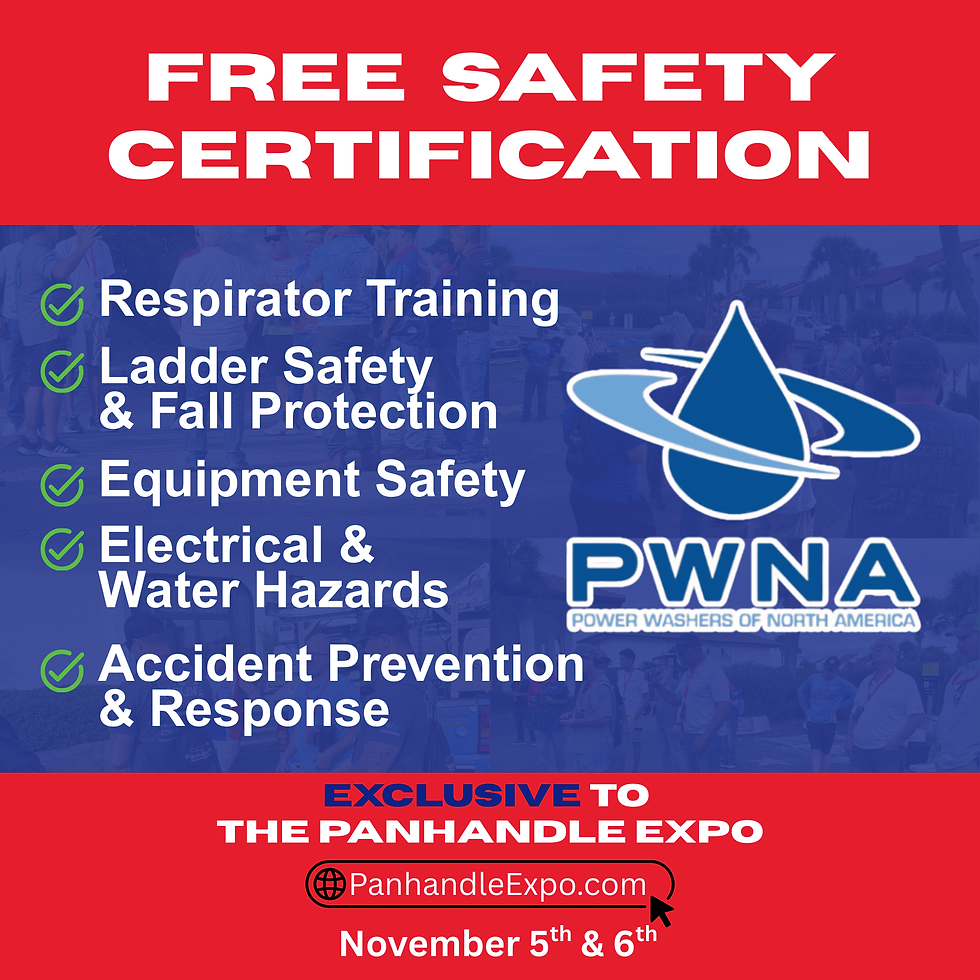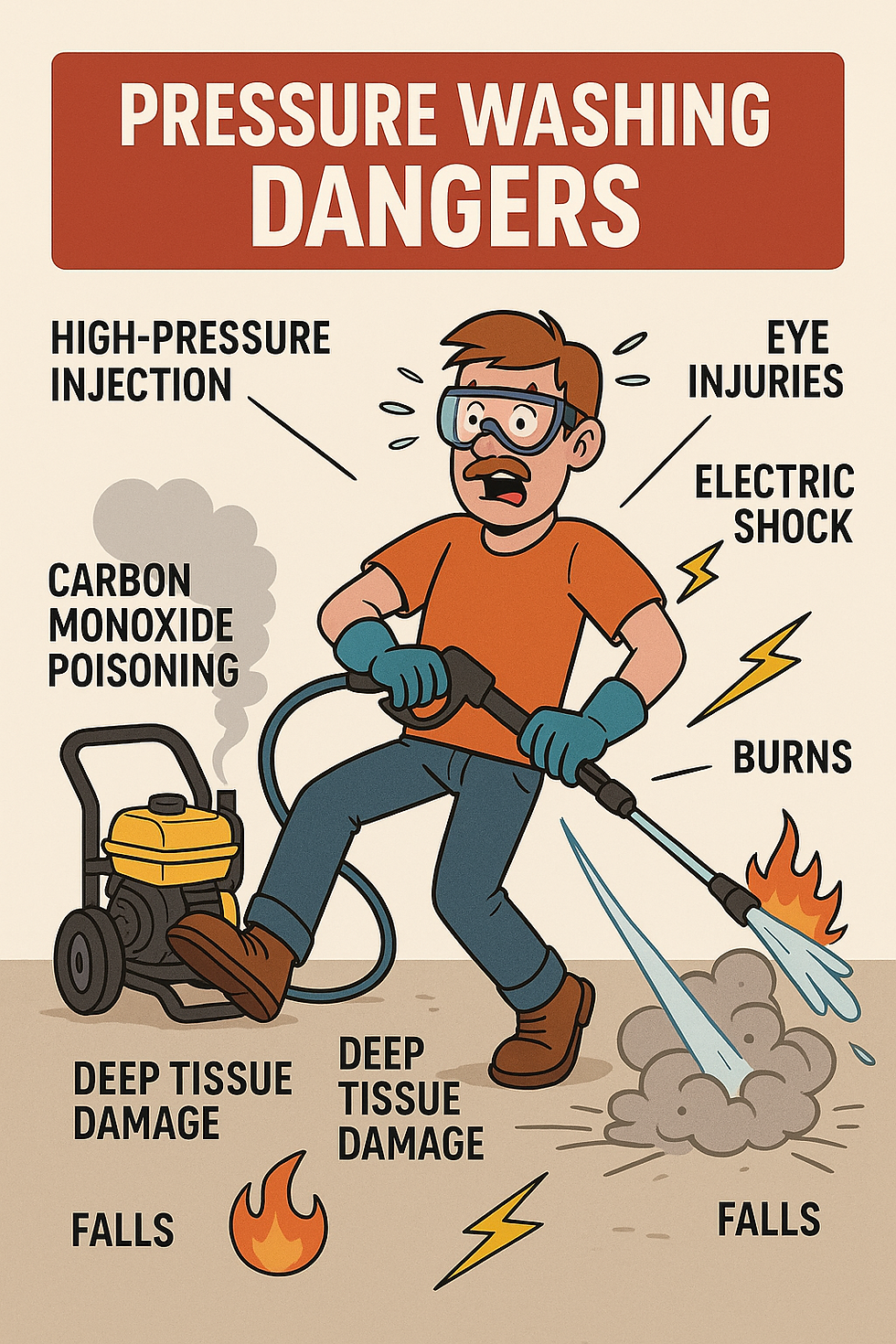Are You Hauling Chemicals Legally? What Every Pressure Washer Needs to Know About DOT Compliance.
- Trudi Weickum

- Jul 19
- 3 min read

If you haul liquid chlorine to your job sites — and most of us do — then you need to understand the rules around transporting hazardous materials. Why? Because getting this wrong isn’t just a paperwork issue — it can lead to serious fines, lost time, and even liability if something goes wrong.
I talk to contractors all over the country, and one thing is clear: many folks are rolling the dice without even realizing it.
Let’s break down what the Department of Transportation (DOT) says about hauling sodium hypochlorite — the active ingredient in most of the bleach we use in soft washing and pressure washing.
The 1,000-Pound Rule: Know the Limit
According to DOT regulations, you can carry up to 1,000 pounds of a hazardous material like sodium hypochlorite without needing hazmat placards — as long as it’s packaged correctly.
What does that mean in real-world terms?
Sodium hypochlorite weighs roughly 10 pounds per gallon.
So 1,000 pounds = about 100 gallons.
That’s your limit before additional requirements kick in.
The “In-Trade Use” Exception: What It Means for You
There’s a special carveout for contractors known as the “in-trade use” exception. It’s incredibly helpful — if you follow the rules.
Here’s how it works:
✅ You can carry eight or fewer 5-gallon containers. (40 gallons total)
✅ It must be for in-trade use. (e.g., you're using it on the job, not reselling it)
✅ You don’t need a Bill of Lading.
✅ You don’t need placards or special markings.
Translation? You can stay legal and move freely — as long as you don’t go overboard.
What Triggers Hazmat Requirements?
Once you go over 1,000 pounds of product or you use larger containers (like an IBC tote or large bulk tank), the game changes:
🚫 Hazmat placards are required.
🚫 A tanker endorsement is needed for drivers.
🚫 You may need a hazmat license depending on how you’re transporting it.
🚫 Insurance premiums can increase once you declare hazmat status.
Also, sodium hypochlorite is classified as a Class 8 corrosive (UN 1791), which brings additional rules around how it's labeled, stored, and reported in case of a spill.
What About IBC Totes?
IBC totes are convenient — they’re stackable, refillable, and hold up to 275 gallons.
But here’s the problem:
👉 Even if you don’t fill it all the way, the total weight can easily exceed 1,000 pounds.
👉 The DOT defines bulk packaging as anything with a capacity of 119 gallons or more — even if it’s not full.
👉 Once you cross that threshold, you’re in hazmat territory.
If you're transporting a full tote and don’t have the proper training or certifications, you may already be in violation.
Most Contractors Are Guessing
Let’s be honest — most pressure washing trucks on the road today are not 100% compliant. And it's not because contractors are being reckless — it’s because the rules aren't clearly explained, and no one told them they were supposed to know.
That’s why education matters.
We Cover This — and So Much More — at the Panhandle Pressure Washing Expo
If you’re in this industry and want to protect your business, you need to understand how compliance affects your daily operations.
From DOT regulations to insurance risks, water reclamation to chemical safety — these are the real-world things that separate the pros from the problems.
📍Join us at the Panhandle Expo and learn directly from those who live this every day.
We don’t just teach theory. We walk the walk. And we’re here to help you grow — safely, confidently, and with the right knowledge to back you up.
By Trudi Weickum | Industry Educator | Panhandle Pressure Washing Expo








Comments